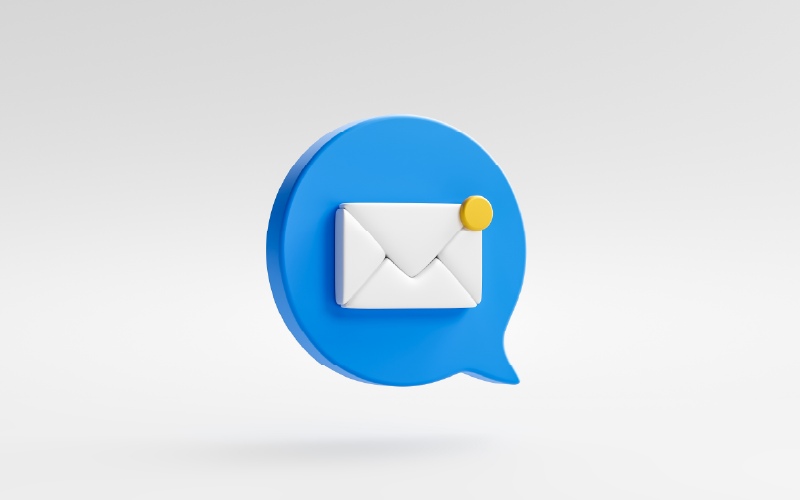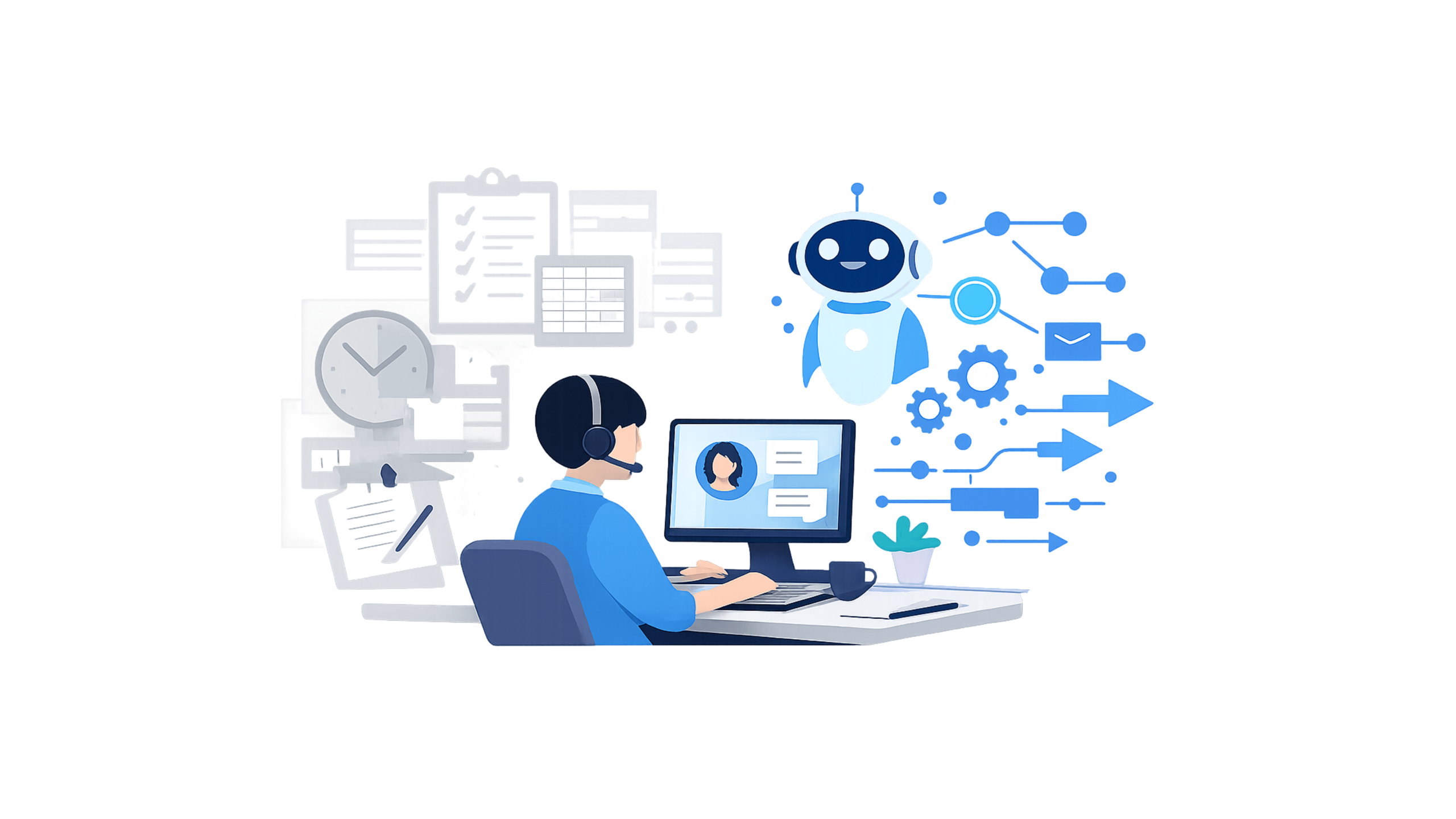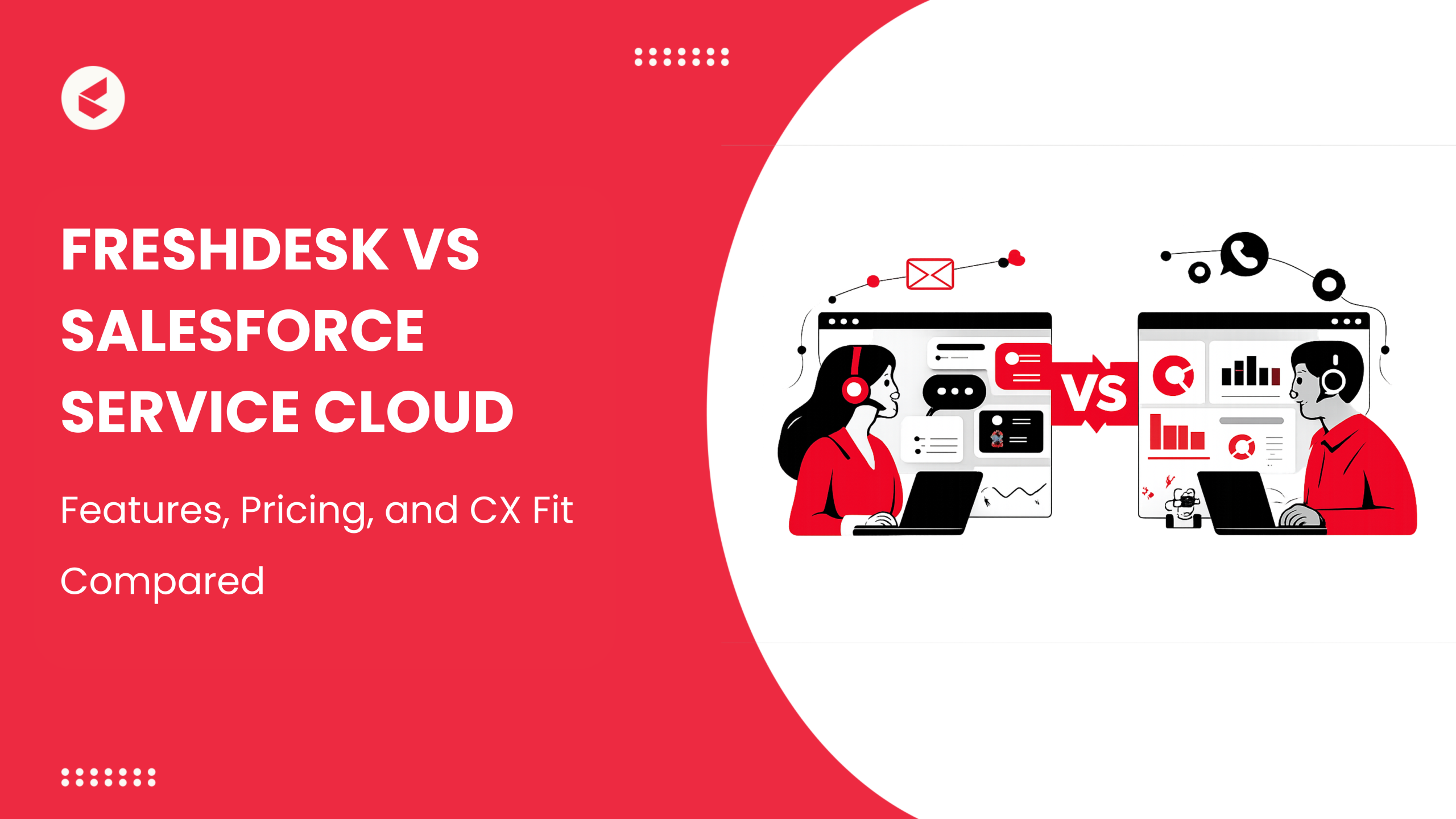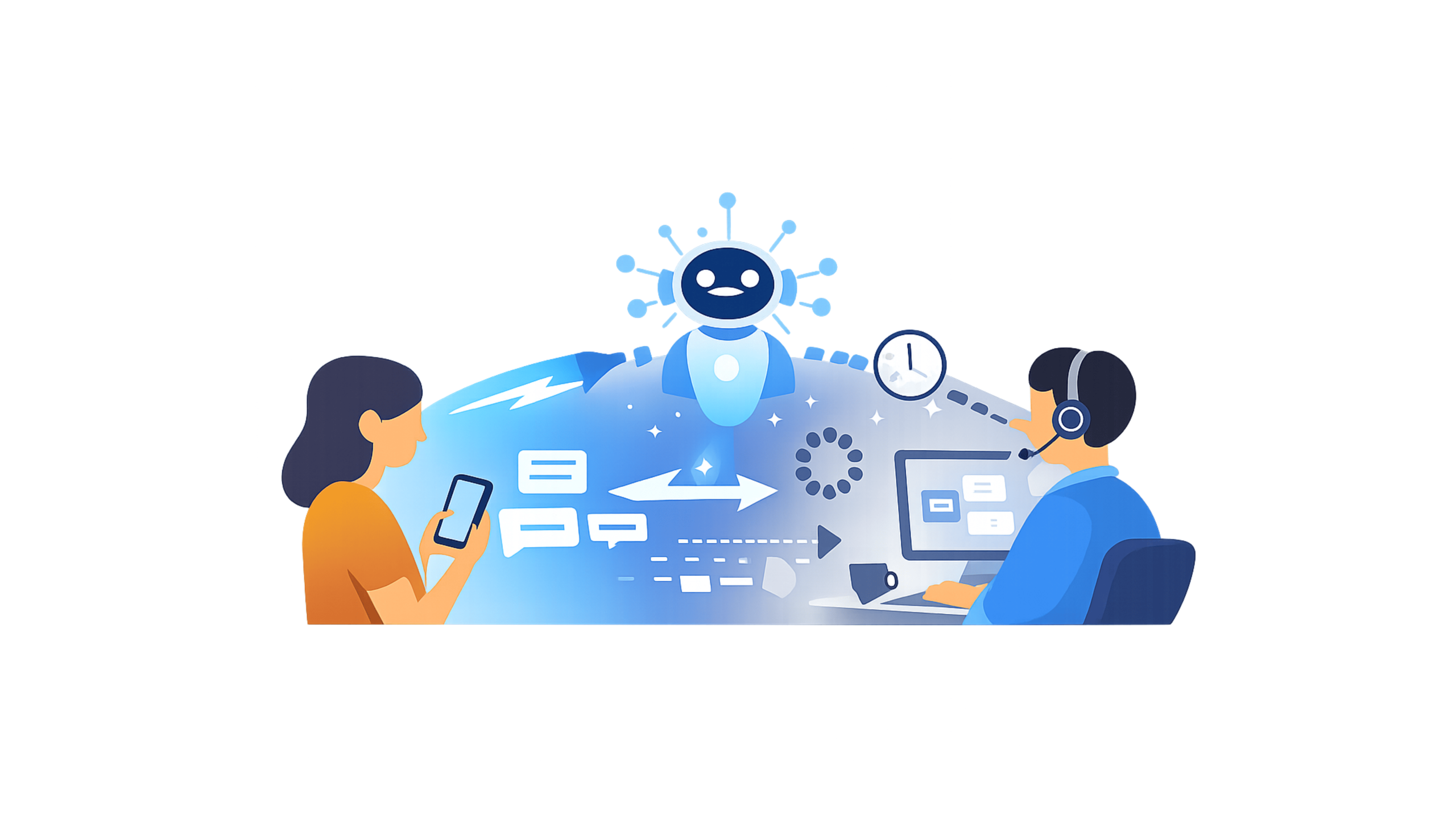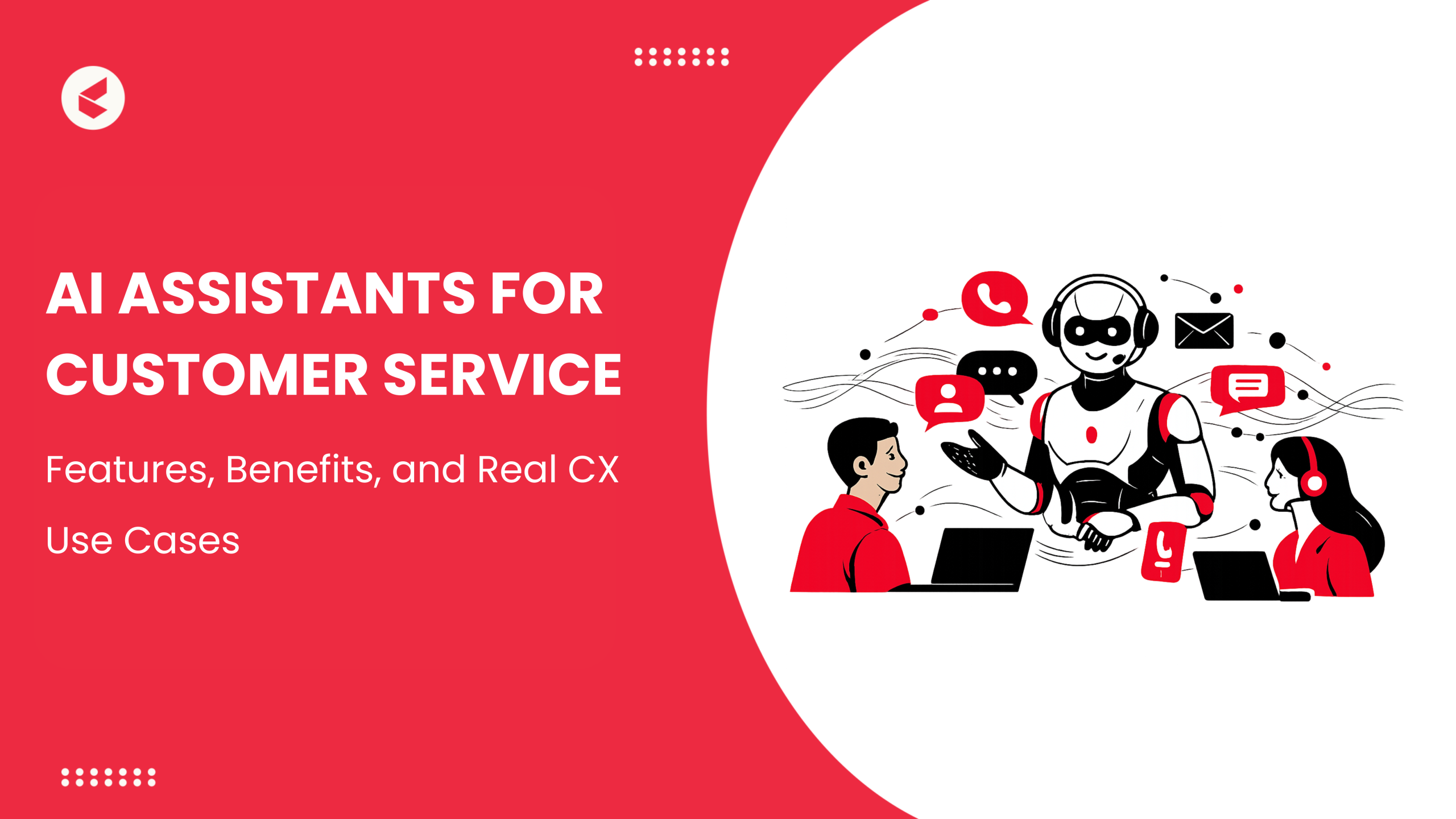In business, being able to respond to emails faster can help you gain an upper hand in the competitive customer service industry. Improving your email response time is crucial for providing a great customer experience, a key differentiator that will set you apart from the competition.
To ensure your customers do not wait long for replies, it is important to implement effective and uncompromising techniques to improve email response times.
What is Email Response Time?
Email response time is the average period your organization takes to respond to a customer’s email request. It depends on factors such as:
- The number of staff available to handle the requests
- The number of tickets assigned to a staff member
- The availability of information as well as its ease of access
Importance Of Email Response Time
In the age of 24/7 connectivity, customers can no longer wait for responses. A customer service email response time is important because it helps:
- Measure productivity in customer service
- Analyze service requests and workload balance
- Build trust between customers and staff
- Identify issues with customer service
- Improve customer satisfaction
And it’s also crucial since faster response times correlate with improved customer service and satisfaction levels.
How do Calculate the Average Email Response Time?
To calculate email response time for a given period, sum up the response times of all the emails and divide it by the total number of responses delivered within the period.
Average email response time = Total time taken to respond during the selected time period / Number of responses in the selected time period.
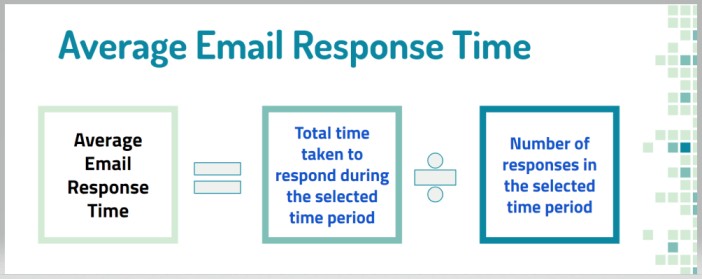
Challenges For Delayed Response Time
Customers anticipate prompt responses when they contact you regarding a product or service issue. A long response time can make customers perceive your service as inadequate, leading them to consider switching to a better provider.
You can risk losing customers if you slacken response times. Thus, delayed response times have a 360-degree impact on your customer service, from earning a bad reputation to poor KPIs and revenue loss.
At times when customer satisfaction is a major differentiator that marks brands as the best, email response time is a significant aspect that cannot be overlooked.
How do Improve your Email Response Time?
With the right processes and technologies, responding to customer inquiries in a timely manner is simple. Here are some pointers on how to improve your email response time:
1. Create Service Level Agreements (SLAs)
Service Level Agreements (SLAs) must explicitly outline response times and the conditions around the service so that customers know when and what to expect.
You can now continually improve your customer service email response time by comparing it to the predefined response times in SLAs.
Again, creating SLAs alone would not serve the purpose. It’s necessary to keep track of SLAs in order to see if they’re being met.
Set up triggers for SLA breaches in Kapture’s help desk solutions, and you’ll be notified when an SLA is likely to be violated. This enables you to prioritize the service request. Emails that have not been answered within the SLA’s stated time range can be flagged to draw attention.
Furthermore, take action on these SLA breaches by escalating the violations straight to the managerial level, following multiple paths, and reassigning the ticket if necessary.
2. Send Automated Notifications
Send confirmation emails to customers stating that a ticket ID has been created for their complaint or query. Inform customers that you have received their query and mention the time frame for resolving the issue. To make these automated notifications effective, it’s important to maintain a high email deliverability rate so that acknowledgment messages reliably reach your customers’ inboxes. This ensures customers always receive timely updates without missing important communication.
Automated responses provide a speedy acknowledgment to customers, which is preferable to no response. Using automated emails, you can send acknowledgment emails to customer requests outside of your service time zone as well.
Additionally, you can include links to a navigable knowledge base in your automated email notifications so that customers can search for and find solutions to their problems.
Customers may well be pleased with having access to information and receiving an acknowledgment email, while you establish your trustworthiness by immediately responding to customer requests.
3. Use Email Templates
Use email templates to create canned responses, which are pre-written phrases that you can rapidly insert into your email to respond to common customer questions.
You can almost instantly see yourself sending a well-thought-out and excellent email. So, with just a few clicks, you can respond to customers’ repetitive emails about frequent issues.
4. Implement Self-Help
Your agents receive a huge volume of emails per day. Imagine how your agents received only fewer emails, so they could respond to the received ones more quickly. So, what’s the best way for you to get fewer emails?
Incorporating self-help tools such as live chat, AI chatbots, interactive discussion forums, and FAQ pages into your help desk system can help customers find answers to their questions. These self-help tools empower your customers to DIY, which can significantly reduce the volume of service request emails you receive.
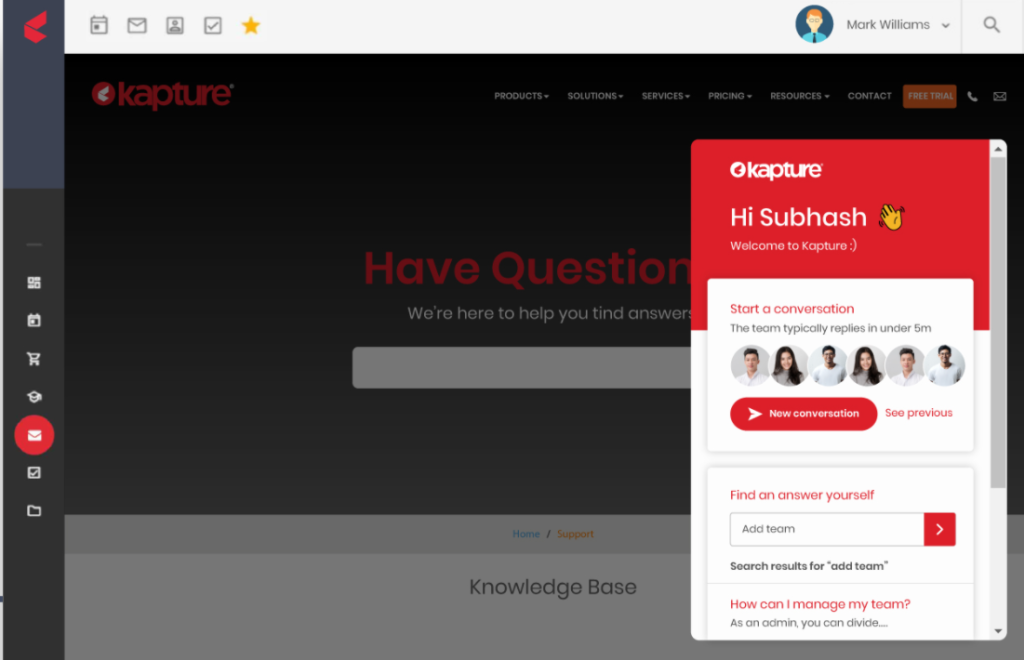
Image: Self-help portal powered by Kapture
5. Go Omnichannel
The omnichannel customer support solution directs all customer inquiries coming through multiple platforms into one inbox, allowing your agents to handle the requests more easily. Agents can see all previous interactions with customers, allowing for a better understanding and deeper engagement.
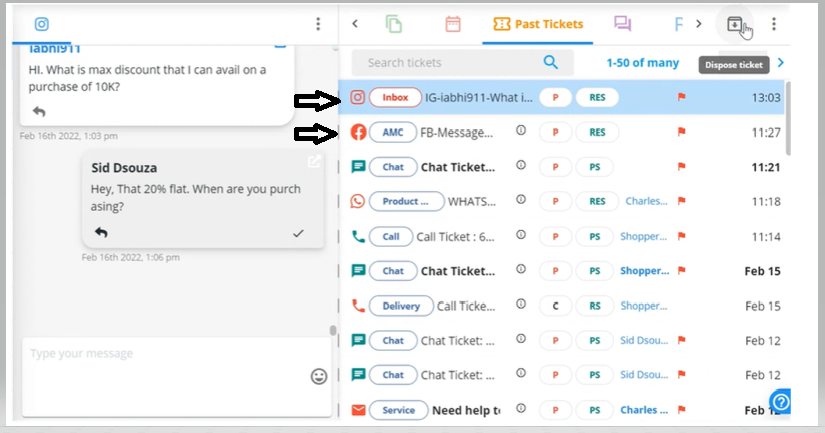
Image: Kapture’s omnichannel help desk window
According to a study, conducted by the world’s top organizations, “the response time is measured by certain benchmarks that companies must reach to be considered as world-class service.
Regardless of the customer service mode – whether email or phone, 1 hour or less is the time customers are willing to wait to get a response to their queries.”
Another study conducted among 3200 participants, in March 2020, by Jeff Toister of Toister Performance Solutions revealed that nearly a third of customers expect businesses to respond to emails in one hour or less.
6. Establish a Response Time Policy
Policies actually do put things in place. As a result, establishing a response time policy with explicit and realistic targets for what your team should achieve is a must-do.
This is a means to measure and track the employee’s performance against a benchmarked response time, besides encouraging your employees to achieve the set goals.
Kapture’s real-time help desk dashboard can maintain a record of agents’ response time to support tickets and allows you to generate reports on it. The inbuilt and customizable agent performance metrics enable you to gain deeper insight into diagnosing bottlenecks, helping you formulate more realistic and competitive email response-time policies.
7. Automate Ticket assignment
Routing tickets to the appropriate agent based on criteria such as skill, region, priority, and so on guarantees that the right ticket is sent to the right agent, resulting in faster resolution.
When tickets are routed based on agents’ skill or proficiency levels, the email ticket reaches an agent who is most qualified to respond to that request, increasing the efficiency of the entire process.
8. Utilize a Knowledge Management System
When your support team is confronted with a request to fix a defect or answer a product inquiry, they may sometimes find themselves in a tight spot. Turning to peers for information, probing them, and acquiring the information can cause a response time delay.
Service staff essentially need to have access to specialized knowledge, which is why a knowledge management system is inevitable. A Knowledge Management system, or KMS helps to store, access, share, and manage information within the organization in a centralized knowledge base or repository.
Kapture’s help desk offers a solution called ‘Agent Assistant Window’ which presents itself to the service staff when prompted. The Artificial Intelligence-powered virtual agent helps your staff by answering questions contextually. The virtual agent window is linked to the knowledge base, via which the virtual agent gathers information and personalizes it based on customer profiles.
This improves productivity at the workplace by empowering employees with quick access to information, allowing them to respond to emails more quickly.
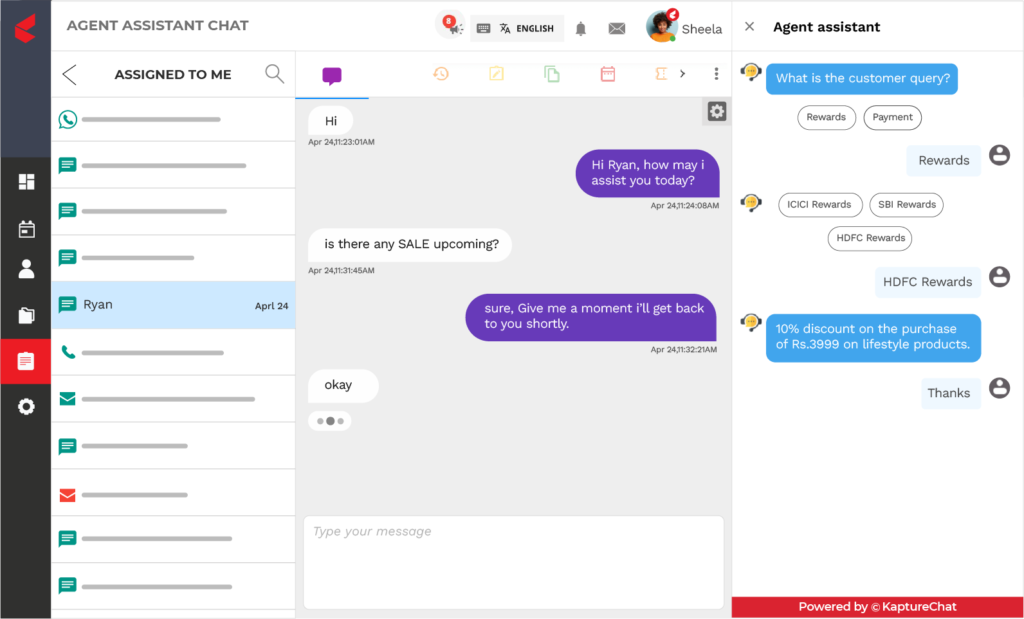
Image: Kapture’s Virtual Assistant
9. Gain Insights: Reporting and Analytics
It is indispensable to measure response times to determine how well you are meeting your goals.
Kapture’s help desk solutions provide advanced reporting and analytics, helping to track email responses by agents or departments, allowing you to adjust policies and improve performance. The exceptional reporting helps you track relevant KPIs and view reports in customizable formats, such as charts or graphs, using drag-and-drop widgets in the reporting dashboard.
And what is more, you can share the reports in multiple formats and schedule timely delivery of the reports to your inbox.
Thus and so, you can unfailingly know which agent is swamped with emails or isn’t meeting his or her goals, as well as the team’s workload. This helps you to chop and change your policies to make amends for the dwindling performance and play it better the next time around.
10. Use Ticket Tagging
How fast you should respond to a customer query depends on factors such as the urgency of the issue and the assured response time in SLAs. Customers anticipate an immediate response if they contact you with an urgent concern.
Help desk automation tools with ticket tagging can be configured to look for keywords like ‘immediately’ or ‘as soon as possible’ in incoming emails. It then automatically assigns a high-priority flag to these emails and notifies the agents to respond to them on an urgent basis. As you can see, it is now easier for you to maintain the variable response time standards for different emails.
How Kapture can help you Tweak your Email Response Time?
Kapture, a customer service automation platform, features omnichannel integration, SLA support, configurable email templates, auto-email responders, KMS, AI chatbots, and comprehensive reporting and analytics, among other capabilities.
Kapture’s solutions include responding to emails promptly and taking pride in offering a positive customer experience. These solutions enable you to respond to emails promptly, exceeding customer expectations and maintaining control over response times.
About the Author | |
 | Seema C Mohan |
| Seema C Mohan is passionate about all things XaaS and loves to write value-added content. She has been in Business Process Management in the past and has published technology articles in journals. | |
,
,
,
,
,
,
,
,
,
,
,
,
,
